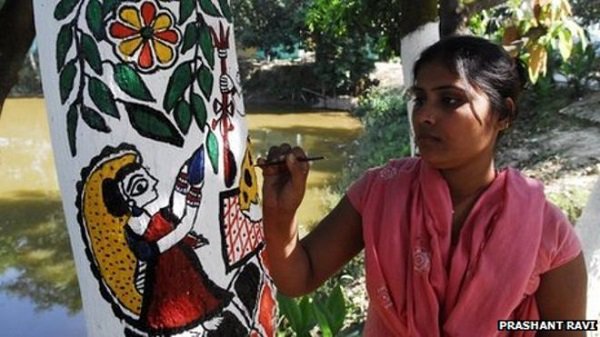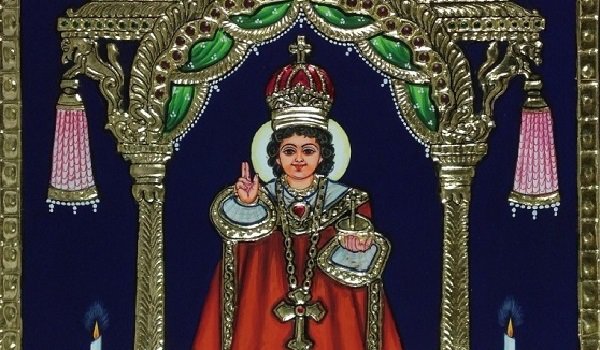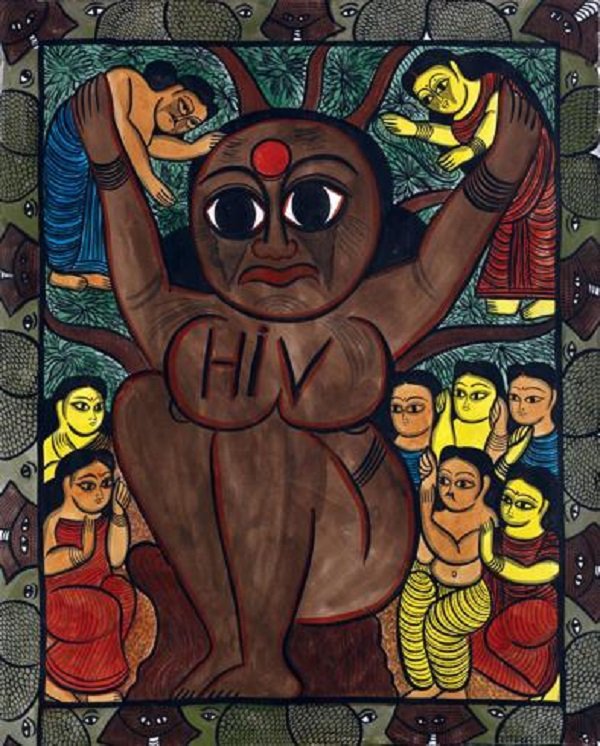All of us say that we are proud of India’s rich cultural heritage. We brag about it on social media and never shy away from raising the said point in any discussion. But do we really care about our arts & handicrafts, the invaluable things that actually showcase it? Do we really value the painstaking efforts and the contributions of our artists? Well, it’s hard to say. But after reading these facts, you will know exactly why we should.
1. In 2012, to prevent deforestation, Madhubani artists created colourful masterpieces on tree trunks.
The result: Not even a single painted tree was cut and highway number 52 of the Madhubani district became a well known tourist attraction.

2. Contrary to popular belief, Tanjore or Thanjavur paintings don’t just have Hindu Gods as subjects.
Jainism, Sikhism, Islam, Christianity and other religions have also been depicted in Tanjore paintings.

3. The thousand year old art form of Patachitra is no longer just about epics & folklore.
The narrative scrolls from Bengal also talk about geopolitical events and social issues like terrorism, HIV, unemployment and climate change .

4. In the age of large scale textiles, there are still artists who do Kalamkari; an ancient fabric painting art which is completely organic.
Yes, from the brushes to the paints to the cloth, everything is 100% natural.
5. The exotic marble stone-craft of Agra has been passed on over six generations.
6. Presently seen on mugs, lanterns, walls, paintings and bed-sheets, the gorgeous Warli art dates way back to almost 2500 BC.
7. The British Museum has around 1000 South Indian paintings which date back to the 17th century.
In 2007, to celebrate India’s independence, the museum showcased these works of art to the public of Britain. The idea was to show what the East India Company might have felt when they experienced the colourful Indian culture for the first time.
8. Based upon the intricacy of work & the pattern used, a single silk Kanjivaram saree can fetch up to Rs. 1,00,000.
9. A piece of Meenakari jewellery still goes through the same assembly line of craftsmen as it used to go through about 500 years ago.
The process starts with the designer (Nacquash) and moves on to the goldsmith (Sonar), the engraver who engraves the design (Kalamkar), the enamelist who applies the colour (Meenakar), the polisher (Ghotnawala), the stone-setter (Jadia), and the stringer (Patua), all of whom are parts of an important human assembly line.
10. Apart from the being the oldest form of entertainment, puppetry is also the oldest form of social and moral education in India.
The art form still continues to tackle problems like dowry, women empowerment, illiteracy and cleanliness in most parts of rural India. In the early 19th century, a small community in Rajasthan called the Nat Bhats even used the art form to spread awareness about the independence struggle.
11. In parts of India, Mural art is still done with eco-friendly vegetable colours. The same way it was done 3500 years ago!
12. The Chippa community of Rajasthan has kept the traditional art of block printing alive since the last three centuries.
We’re sure you’re as proud of our heritage and our culture as we are. But some are driven even further. Some are passionate beyond what is considered the norm. Here’s the story of one such inspired Indian, Medhavi Gandhi, an entrepreneur who aspires to protect and promote our arts and the artists who create them. Check out the video to find out what drives her.
Are you also driven like Medhavi? Then just share your story in Ford Figo Aspire’s ‘What Drives You?’ contest and earn yourself a chance to win a brand new Ford Figo Aspire, one lakh rupees and many other surprises!
Sponsored by Ford